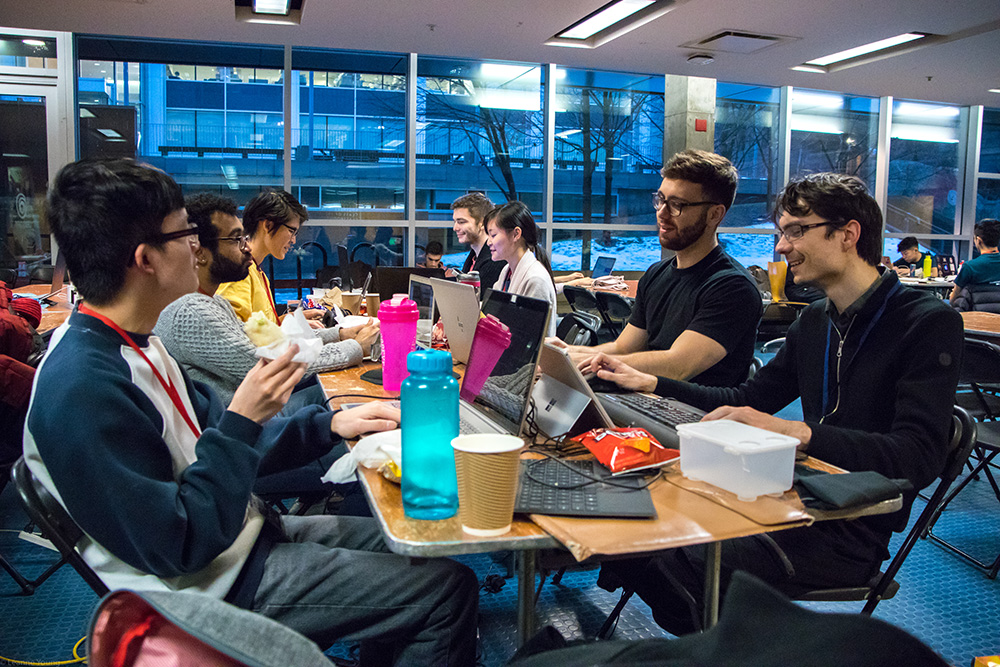Designing an entire video game would be an impressive feat to accomplish within a matter of years. This past weekend, however, the McGame Jam, a development marathon organized by Game Dev McGill, condensed the video game making process into just 48 hours of straight development that took place Jan. 10-12. Teams made up primarily of McGill students gathered in the Trottier building to participate in a game jam, an event that hones the skills of artists, programmers, and designers as they endeavour to create an entire video game within the strict time limit. This year’s theme was “Can’t Go Back,” an abstract idea that teams must incorporate however they like into their game.
Recent Concordia graduate Camilo Ignacio Vides Perez’s take on the theme culminated in an Indiana Jones-style puzzler in which the player must grab a treasure and get out. The catch: The floor falls away after walking on it, leading to some tricky and creative challenges. Perez led the programming and directing on his team, making sure each aspect of the game is both as functional and as fun as possible. One of the most underappreciated aspects of game design, Perez explained, is the core, fundamental design principles of architecture.
“It is so important for a game to have core mechanics and polish so the game can actually be fun,” Perez said. “If we lose sight of the game’s architecture, we don’t have a fun game.”
While working with a larger, more established team would allow someone like Perez access to more resources and staff, he insists that amateur projects like McGame have their own benefits:
“[In a major studio], you don’t have to think about finances. Budgeting isn’t a problem,” Perez said. “But in an independent studio, you have more freedom of creation. You don’t have to abide by what the game studio wants you to do.”
Michelle Samson and Leeza Girolami, 3D and 2D artists, respectively, operate on the opposite end of the game design process. Their team’s game began as a horror title, inspired by the ominous theme of the Jam, but eventually became a project they describe as being at once more sorrowful and funnier than their original idea.
“We ditched the horror at some point and it became a meme [….] We joked around and deviated into a sad story,” Samson said.
Their final product focused on a family of beavers forced to relocate due to their habitat being destroyed. When asked about the pros and cons of working at a large studio, Samson and Girolami cited the creative freedom as one of the more enjoyable aspects of independent game design.
“From what we hear about big studios, you get a very specific type of task; maybe you’ll start to design rocks and for three years you’ll be doing rocks,” Samson said. “Rocks are great, but then you go somewhere else and they say ‘what’s your portfolio?’ and you say 100 rocks.”
When the teams only have 48 hours, creating a game in such a short window of time means that certain design aspects are often overlooked, and Samson and Girolami see sound design as paramount in order to succeed in giving a game a distinct atmosphere.
“[Sound] really completes the game,” Girolami says. “A lot of people forget to put in music and that’s always the missing link [….] You don’t want to be stuck in this vacuum.”
Though it may seem like a tech-heavy event, Game Jams offer spaces for every kind of creative mind, from digital artists and sound designers to storytellers. While programming is essential, it barely scratches the surface of all the work that goes into creating the games we play and enjoy.








